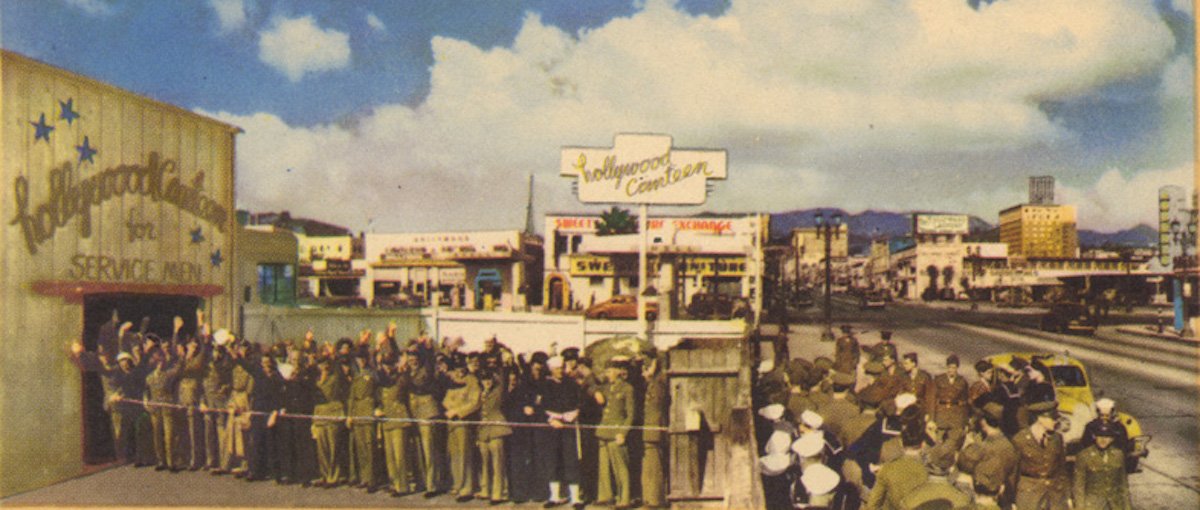The Hollywood Canteen
A line of servicemen wait to enter the Hollywood Canteen.
In 1940s Hollywood nightlife most people thought of Ciro’s, the Hollywood Palladium, or Mocambo as the places to see the studio’s stars shine - but from 1942 until 1945, a little barn on Cahuenga probably hosted more stars than those three clubs combined. It was known as the Hollywood Canteen, and its purpose was to boost the morale of the servicemen that were defending freedom overseas - for a brief time, it seemed all of Hollywood was united in this noble cause.
With the onset of World War II the Hollywood Community immediately responded to the call - Jimmy Steward, Kirk Douglas, and Paul Newman enlisted in the military. War Bond sales tours were organized and Hollywood’s Victory Committee was established. After John Garfield was declared unfit for military service he looked elsewhere for an opportunity to contribute to the war effort. Here are five facts about the Hollywood Canteen:
It was inspired by New York City’s Stage Door Canteen. The New York Canteen offered music, dancing, food, and the chance for soldiers to brush shoulders with the theatrical community’s elite. Garfield rightly figured Hollywood had all the ingredients for a similar experience for soldiers shipping out for duty from the West Coast.
It also inspired a movie, 1944’s Hollywood Canteen in which a love-struck soldier meets the object of his affection, actress Joan Leslie, at the Canteen. The film provides a great historic record of what the Hollywood Canteen looked like and the type of entertainment it provided.
The Hollywood Canteen was completely free to United States and Allied Nations servicemen. There was no charge for entry, food, entertainment, or autographs.
The Hollywood Canteen was not segregated - in an era where this was rare, co-founder Bette Davis made a point of saying the Hollywood Canteen was for ALL races. Women serving in all branches of the Armed Forces were also welcome.
It was completely created, built, and staffed by volunteers from Hollywood’s motion picture community. Aside from a few administrative staff members, the Hollywood Canteen was renovated, decorated, and run by volunteers from 42 unions related to the film industry. Set designers, electricians, plumbers, extras, office employees, as well as stars volunteered in the creation, maintenance, and operations of the Hollywood Canteen.
The revelry at the Hollywood Canteen no doubt inspired many military men with fresh motivation, a sense of appreciation, and a once-in-a-lifetime experience. It was fulfilling for the celebrities and entertainers that worked there. For three war-torn years in America’s history, the Hollywood Canteen allowed Hollywood to do what it did best: create a bit of magic and escape for those who needed it most.
Want to know more about the Hollywood Canteen? Join me this Saturday, November 12th at 10:30 AM PT via Zoom for “The Story of the Hollywood Canteen.”

